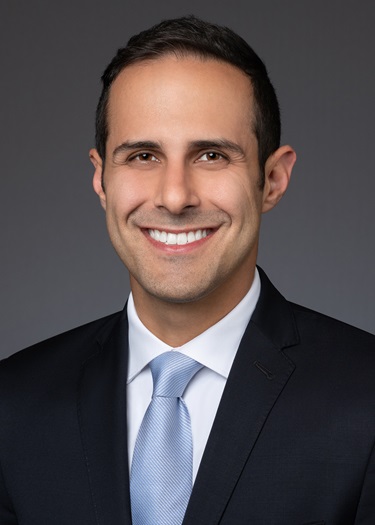International Trade Update
Coming U.S. Attraction: Movie Tariffs
On May 4, President Donald Trump announced on social media that he was authorizing the start of a process to impose 100% tariffs on foreign movies. How or whether the tariffs will be imposed remains unclear, as is the legal authority that the President intends to rely on. However, there are several options the administration may consider.
What President Trump said
On May 4, President Trump announced that he was “authorizing the Department of Commerce, and the United States Trade Representative [USTR], to immediately begin the process of instituting a 100% Tariff on any and all Movies coming into our Country that are produced in Foreign Lands.” According to the post, “The Movie Industry in America is DYING a very fast death.” The President complained about foreign incentives that draw film production away from the United States and declared that “[t]his is a concerted effort by other Nations and, therefore, a National Security threat. It is, in addition to everything else, messaging and propaganda.”
The announcement appeared to catch the industry, and relevant U.S. government agencies, off guard. The day after President Trump’s announcement, the White House clarified that “[a]lthough no final decisions on foreign film tariffs have been made, the administration is exploring all options to deliver on President Trump’s directive to safeguard our country’s national and economic security while Making Hollywood Great Again.”
President Trump’s announcement reportedly came after the actor Jon Voight submitted a proposal providing that “[i]f a U.S. based production ‘could have been produced in the US’, but the producer elects to produce in a foreign country and receives a production tax incentive therefore, a tariff will be placed on that production equal to 120% of the value of the foreign incentives received.”
Mechanics are unclear
Many countries impose taxes, domestic content requirements, or quotas on foreign film production. The imposition of tariffs on foreign films is, however, a novel concept, primarily because tariffs are imposed on the imports of physical products. Movies and other video content are not typically imported as physical products but instead are transmitted digitally.
Currently, the United States does not impose a tariff on digital transmissions. In fact, Members of the World Trade Organization (WTO) have agreed to a moratorium on tariffs for “electronic transmissions” until March 31, 2026 (or until the next WTO Ministerial Conference, whichever is earlier). A similar principle is enshrined in several U.S. trade agreements, including the U.S.-Mexico-Canada Agreement (USMCA), which provides in Article 19.3 that “No Party shall impose customs duties, fees, or other charges on or in connection with the importation or exportation of digital products transmitted electronically, between a person of one Party and a person of another Party.”
Whether the Trump administration will feel constrained by international agreements that restrict the imposition of tariffs on digital transmissions, including films, or whether the administration will conclude that the imposition of tariffs on films is logistically too difficult, is not clear. However, the administration could, as other countries have done, explore other options including domestic content requirements, taxes, or quotas.
Legal authority for the tariffs
President Trump did not identify the legal authority for imposing tariffs on foreign movies. The fact that he invoked “national and economic security” may, however, hint about his intended approach. President Trump relied on the International Emergency Economic Powers Act (IEEPA) as authority to impose his “Liberation Day” tariffs on imports of goods from around the world. IEEPA authorizes the President to take action under IEEPA “to deal with an unusual and extraordinary threat with respect to which a national emergency has been declared.” On that basis, the President may “regulate … any importation [of] … dealing in … or transactions involving” property subject to the jurisdiction of the United States. President Trump’s authority to use IEEPA to impose tariffs is being challenged in court.
President Trump could also seek to rely on other authorities. The fact that President Trump authorized Commerce and USTR to consider options for imposing the tariffs may be instructive. Commerce administers Section 232, which authorizes the imposition of tariffs on an “article” if the article is being imported in such quantities or circumstances as to threaten to impair the national security. Whether Section 232 could be used to impose tariffs on films (which are generally not considered to be “articles”) is not clear. In general, the process associated with Section 232 investigations takes approximately 300 days due to the required process, although it is widely expected that the administration will act more quickly than the historical norm in the ongoing Section 232 investigations of imported semiconductors and imported pharmaceuticals.
USTR administers Section 301, which allows USTR to take certain measures if, after an investigation, it determines that a foreign act, policy, or practice is, for instance, unreasonable or discriminatory and burdens or restricts U.S. commerce. President Trump used Section 301 in his first term to impose tariffs on imports from China. USTR also used Section 301 last month when proposing, inter alia, services fees on certain maritime transport services in response to certain Chinese acts, policies, and practices. Section 301 authorizes USTR to impose, for example, tariffs on imported goods or “fees or restrictions on the services” of a foreign country and so could be used as source of authority to impose fees on the foreign films. In general, a Section 301 investigation takes a year or more to resolve due to the required process.
A cliffhanger
The day after he announced his intention to impose the tariffs, President Trump indicated that he would be meeting with representatives from the U.S. film industry. He indicated that his intention was to “help the industry” and that “we’re all about jobs.” Neither USTR nor Commerce has said much about the proposal, other than Commerce Secretary Howard Lutnick simply stating, “We’re on it.” Until further details are released, we will not know how the administration plans to implement the President’s directive.
Attorney Advertising—Sidley Austin LLP is a global law firm. Our addresses and contact information can be found at www.sidley.com/en/locations/offices.
Sidley provides this information as a service to clients and other friends for educational purposes only. It should not be construed or relied on as legal advice or to create a lawyer-client relationship. Readers should not act upon this information without seeking advice from professional advisers. Sidley and Sidley Austin refer to Sidley Austin LLP and affiliated partnerships as explained at www.sidley.com/disclaimer.
© Sidley Austin LLP
Contacts
Capabilities
Suggested News & Insights
- Stay Up To DateSubscribe to Sidley Publications
- Follow Sidley on Social MediaSocial Media Directory




